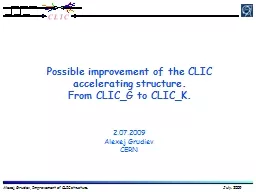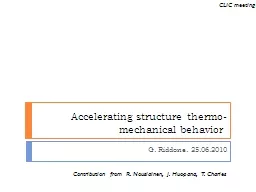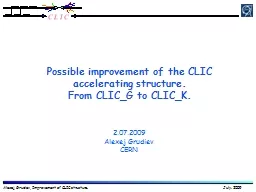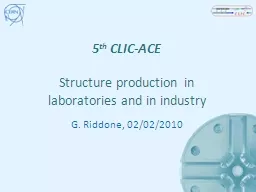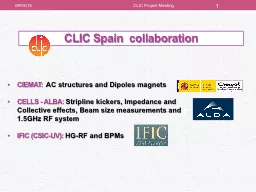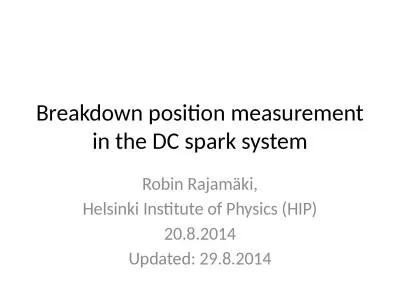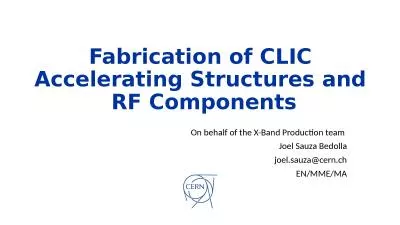PPT-Breakdown positioning in CLIC prototype RF accelerating structures
Author : welnews | Published Date : 2020-06-15
CLIC workshop 2016 R Rajamäki W Farabolini J Giner Navarro T Argyropoulos B Woolley W Wuensch 19012016 Aalto university CERN Introduction What Localize
Presentation Embed Code
Download Presentation
Download Presentation The PPT/PDF document "Breakdown positioning in CLIC prototype ..." is the property of its rightful owner. Permission is granted to download and print the materials on this website for personal, non-commercial use only, and to display it on your personal computer provided you do not modify the materials and that you retain all copyright notices contained in the materials. By downloading content from our website, you accept the terms of this agreement.
Breakdown positioning in CLIC prototype RF accelerating structures: Transcript
Download Rules Of Document
"Breakdown positioning in CLIC prototype RF accelerating structures"The content belongs to its owner. You may download and print it for personal use, without modification, and keep all copyright notices. By downloading, you agree to these terms.
Related Documents



